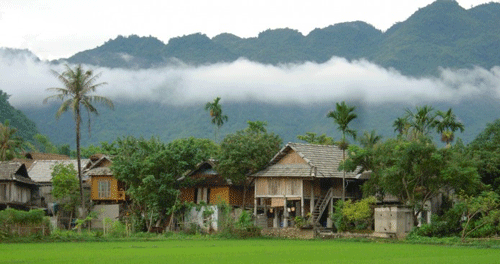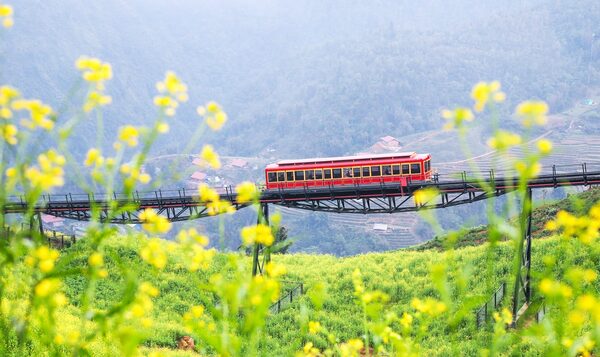In Y Ty Village of Lao Cai Province in northern Vietnam, small houses are topped with four-sided ‘hip’ roofs covered with moss. Seen from above, these ancient structures take on the appearance of huge mushrooms.
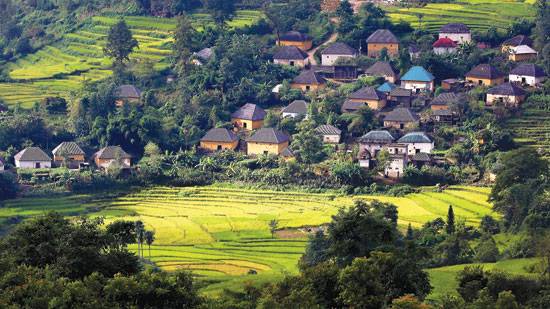
Y Ty Village is one of the poorest mountain communes in Bat At district, Lao Cai province. It is covered with clouds most of the year and the weather is harsh. However, the commune increasingly attracts tourists who enjoy the scenes of cloud-filled valleys and terraced fields rising to heights of 1500m. These unique houses add to the effect of the scenery, giving the place a storybook, ancient atmosphere.
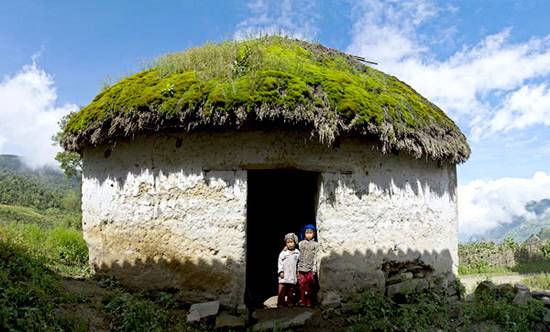
Houses in Y Ty
The route leading to Y Ty commune is rough, though it is only some 70km from the provincial central. Following routes which wind like snail tracks up to the peak of Nhu Co San, you get the feeling of driving up to the sky, and then descend into the valley of fog and cloud. Reaching Y Ty, you will find picturesque scenery as local ethnic minority women carry firewood from around this vast natural area to the market.
The ethnic minorities in this area are among the smallest groups in Vietnam. Besides groups such as Hmong, Dao and Giay, the residents of Y Ty belong to the Ha Nhi ethnic group, specifically the Black Ha Nhi. This group’s unique style of traditional houses contributes to the area’s attractiveness. Unlike the houses of most other ethnic minorities that you can see when exploring the Northern Vietnam, people here build houses with earthen walls and ‘hip’ roofs – shaped like a pyramid.
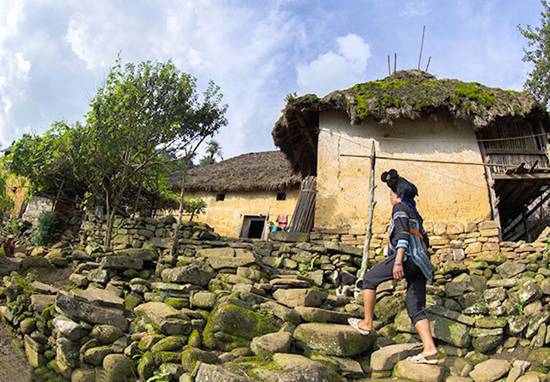
The house foundations are not underground, but right on the rocky surface
The impressive walls of these houses can be 40-50cm thick and rise 4-5m high. This type of structure, while reflecting the difficult economic conditions in the village, is also well-adapted to the mountainous area’s harsh weather conditions. Houses in such design are helpful both in the winter and in the summer.
It is hard to imagine the amount of labor it takes to build such houses. In fact, local people spend months constructing these houses, and they typically will be repaired and maintained after each season. The building procedure begins with choosing a site with expected the proper soil quality. Then, the foundation is made using different mountain stones. The foundation is set right on the rocky surface, instead of being dug underground like modern houses in cities.
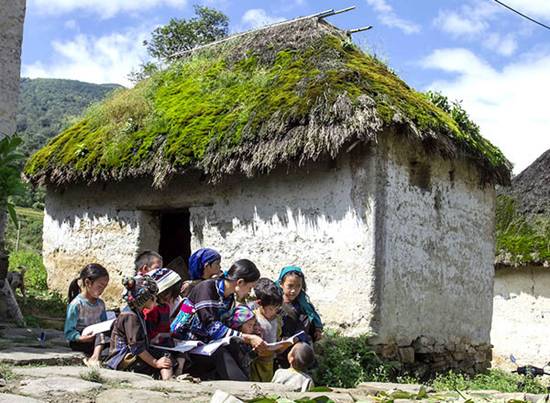
The earthen-walled houses are warm in the winter and cool in the summer
Walls are then built by putting soil into a framework which forms various layers, and with use of the proper types of soil, forms a solid wall. The low-slope roof with no clear ridge-lines is tiled with grass. The doorway is in the middle of one wall, and an extra door on one side is used as the entrance to an enclosure for a buffalo or horse.
Although these houses are rarer than they used to be in Y Ty Village, those that remain are particularly attractive for photographers and have graced the scene of many a sunrise or sunset photograph. Many of those who travel here in their Vietnam tour are enchanted by the unique appearance of these structures.









